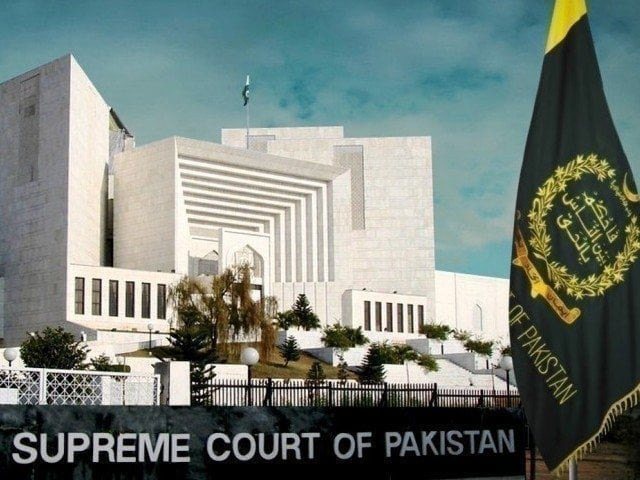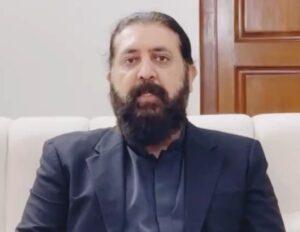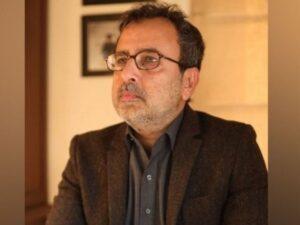Islamabad:
A letter from the Supreme Court judge, judge Mansoor Ali Shah and judge Munib Akhtar, surfaced on Wednesday, reviving the debate on the treatment by the judiciary of the 26th constitutional amendment and if it must be taken up by a constitutional bench or in the complete court.
In the detailed letter, the two superior judges interviewed the decision of the chief Yahya Afridi not to take into account the point of view of the majority of the procedural committee in favor of the constitution of a full court.
Judge Shah and Judge Akhtar recalled that as members of the Committee were formed under the law of the Supreme Court (practice and procedure) 2023, they had on October 31, 2024, decided to constitute a full court to hear petitions contesting the 26th constitutional amendment.
“We had decided to build a full court,” said the letter. However, the case has never been scheduled. When the decision was not implemented, the judges followed a letter on November 4, but even it did not obtain compliance, he added.
They stressed that the notes subsequently by the chief judge – dated October 31 and November 5 – were not shared with them. “We are obliged to write now because the minutes of the meetings were downloaded after almost ten months, and the two tickets of the chief judge were not issued or provided to the undersigned,” the judges wrote. Instead, one of these notes was read at a meeting of the Pakistan Judicial Commission (JCP), a forum which, according to them, had no competence in the matter. “The Judicial Commission was not the forum of such a question, and the committee’s decision of 31.10.2024 could not be transmitted to a constitutional bench or to its committee, for the simple reason that they did not exist on this date,” they stressed.
The two judges challenged the sudden disclosure of procedures, wondering why the minutes that were previously limited had now been placed in the public domain. They recalled that in November 2024, the committee had decided that the majority had decided that the minutes would have “limited traffic” and not be downloaded online.
“The obvious question that arises is why the minutes have now been publicly disclosed despite the ban placed by the Committee itself?
The letter highlights the events of October 31, when the two judges met the chief judge in his rooms. They pressed a full court to hear the petitions, citing a crisis of confidence. “We have stressed that the very legitimacy of the Supreme Court, as well as the office of the chief judge, was in question, and that only a transparent and collective arbitration – by the whole court could restore the confidence of the public,” notes the letter.
The chief judge, however, resisted, arguing that such cases could only be heard by constitutional benches newly created under the 26th amendment itself. The judges opposed that the reference to the dispute to a bench constituted under the very contested amendment would seriously undermine the credibility of the court.
Although the chief judge asked for an hour to reflect, he then informed the judges of the chambers of judge Akhtar according to which he had rather asked for opinions individually from other judges. The two judges were strongly opposed.
“The act of the chief judge to ask for individual opinions was contrary to law and judicial practice, and the opinions obtained in this way had no legal position,” they said. According to them, the consensus could only be obtained through an appropriate committee or a complete justice meeting.
Later the same day, an official committee meeting was summoned, according to the letter. After discussion, the judges voted in favor of the constitution of a full court, while the chief judge dissipated. The majority decision, registered in the minutes, was that the petitions against the 26th amendment would be set to hear on November 4 in full court.
But the decision has never been made. “The decision has not been implemented. The petitions were not set before the full court on 4.11.2024,” recorded the letter. When the judges wrote again to the chief judge emphasizing non-compliance, no response was received, he said.
Instead, the chief judge published a note and transferred the case to the judicial committee, which “approved” the constitution of a bench of seven members. The judges criticized this stage as an attempt to bypass the decision of the binding majority of the committee.
“Once again, a binding decision of the committee had no effect. The notes of the chief judge provide no reason or justification for non-compliance,” they wrote. According to the judges, this failure left the court without collective institutional response.
“At a time when no question was more important for the court, it was necessary to immediately create a consensus by calling a complete meeting of the court … This answer could only come from judges themselves, by meeting in an open court or in a complete meeting.
They also claimed that “the challenges of the 26th amendment continue to remain pending and a golden opportunity to decide them at the earliest in front of the complete court – was lost, perhaps irreparably”.
Now that the minutes and related documents have been downloaded, the judges demanded that their explanatory letter be also placed on the Supreme Court website. “If everything is now so that history judges, at least, that the file is complete,” they concluded.
The judges were categorical: “It was compulsory to constitute a full court on the 26th amendment, and no one could prevail. The notes of the chief judge have undermined the majority decision.”
The refusal to constitute a full court invited speculation and doubts as to the reason why the beneficiary of the 26th constitutional amendment is reluctant to examine as if the amendment undermines the independence of the judiciary.
The former president of the association of the bar of the High Court of the Sindh, Salahuddin Ahmed, believes that the refusal of the CJP Afridi to respect the decision of the Committee of Practice and Procedure to list the petitions contesting the 26th amendment was illegal.
“It may have been of the real opinion that such petitions should be heard by the constitutional bench (each time it was formed) rather than the complete court. But the majority of the committee thought that the opposite was therefore correct and the petitions should not be heard before the major of the CB; see judge Syed Mansoor Ali Shah and the judge Munib Akhtar were correct, they would have explained the reasons in their order.
Salahuddin Ahmed says that the apprehension of CJP Afridi that this stage would mine judicial collegiality, with respect, does not seem logical. First, collegiality cannot be prioritized on judicial responsibilities. Second, the refusal of a year now by one year to leave the challenges of the 26th amendment – has clearly compromised the (unlikely) committees within the judiciary and its reputation for independence “
Finally, the former SHCBA president declares that this failure has led to unnecessary speculations and reluctance according to which the reluctance to list the challenges of the 26th amendments was the fear that some of the 9 judges who would have agreed that petitions should not be listed to perhaps change their minds after the arguments in the open justice or during an official meeting, he adds.
Lawyer Rida Hosain says that the reluctance of CJP Yahya Afridi to place the petitions contesting the 26th amendment before a full court was inexplicable.
“The assertion of the CJP according to which he went around informally by asking the judges from their point of view is frankly absurd. Questions which should have been determined in an open courtroom are decided behind closed doors. In addition, the CJP violated a binding decision of the Committee and eroded the public in power. Adds.
Rida Hosain also declares that judges Mansoor Ali Shah and Munib Akhtar said that if it was the story of judging, while the file was complete. The 26th amendment allowed the Martial Civilian Court, the capture of the High Court of Islamabad and the reversal of the reserved seats. Although these disastrous decisions were made, the constitutional validity of the 26th amendment has remained disputed. If the 26th amendment is finally canceled, the decisions taken by the constitutional bench will be in question. This is not a question to judge in history. The only way to follow is that the petitions are subject to the complete court (as it existed before the adoption of the 26th amendment), “she said.
Mirza Moiz Baig Advocate said that the letter generates serious concerns concerning the role of the chief judge. While CJ Afridi played an inaccessible reputation, his recalcitrance to hear the petitions contesting the 26th amendment eroding the public’s confidence in the Supreme Court and in the office of the chief judge. In addition, with the government later amending the Practice and Procedure Act to submit a majority to the CJ, the concerns concerning the impartiality of the Supreme Court only aggravates, he adds.
ATIRA IKRAM’s lawyer deplored that such critical constitutional questions, such as the 26th amendment, are also victims of the division and discourse which was widespread in our judiciary. “It would have been much more beneficial in the restoration of public confidence, if the judges relegated the difference of opinion to their judgments and did not play their personal vendettas at the public stages, normally reserved for politicians,” she adds.




